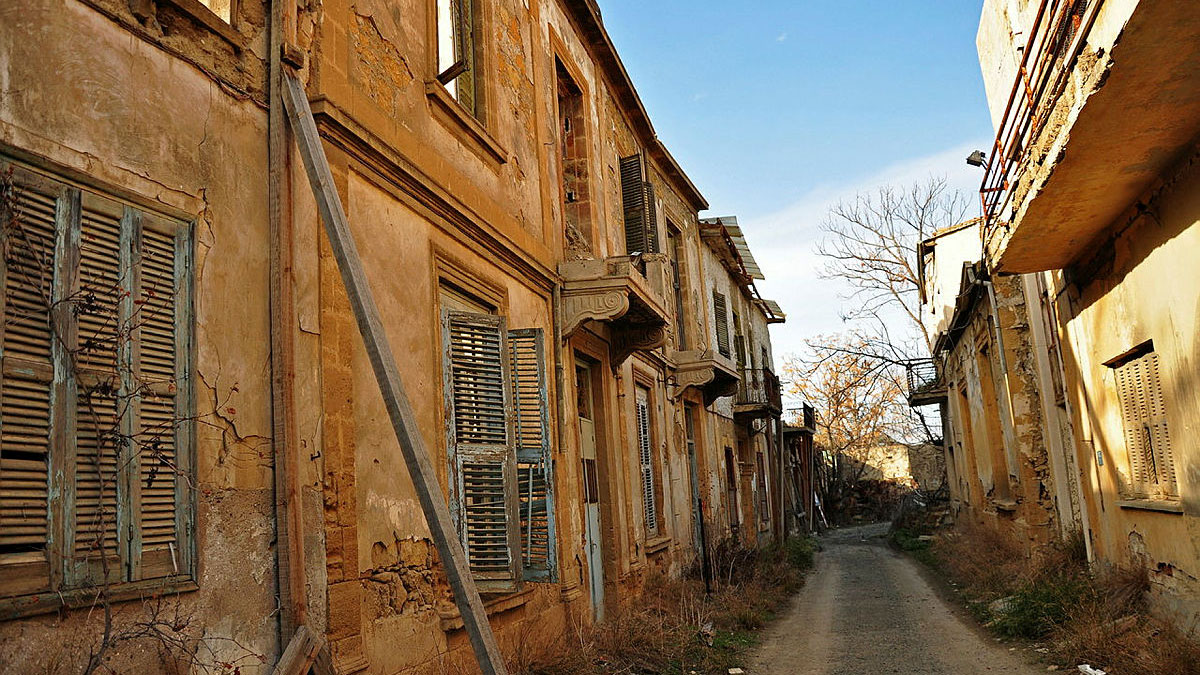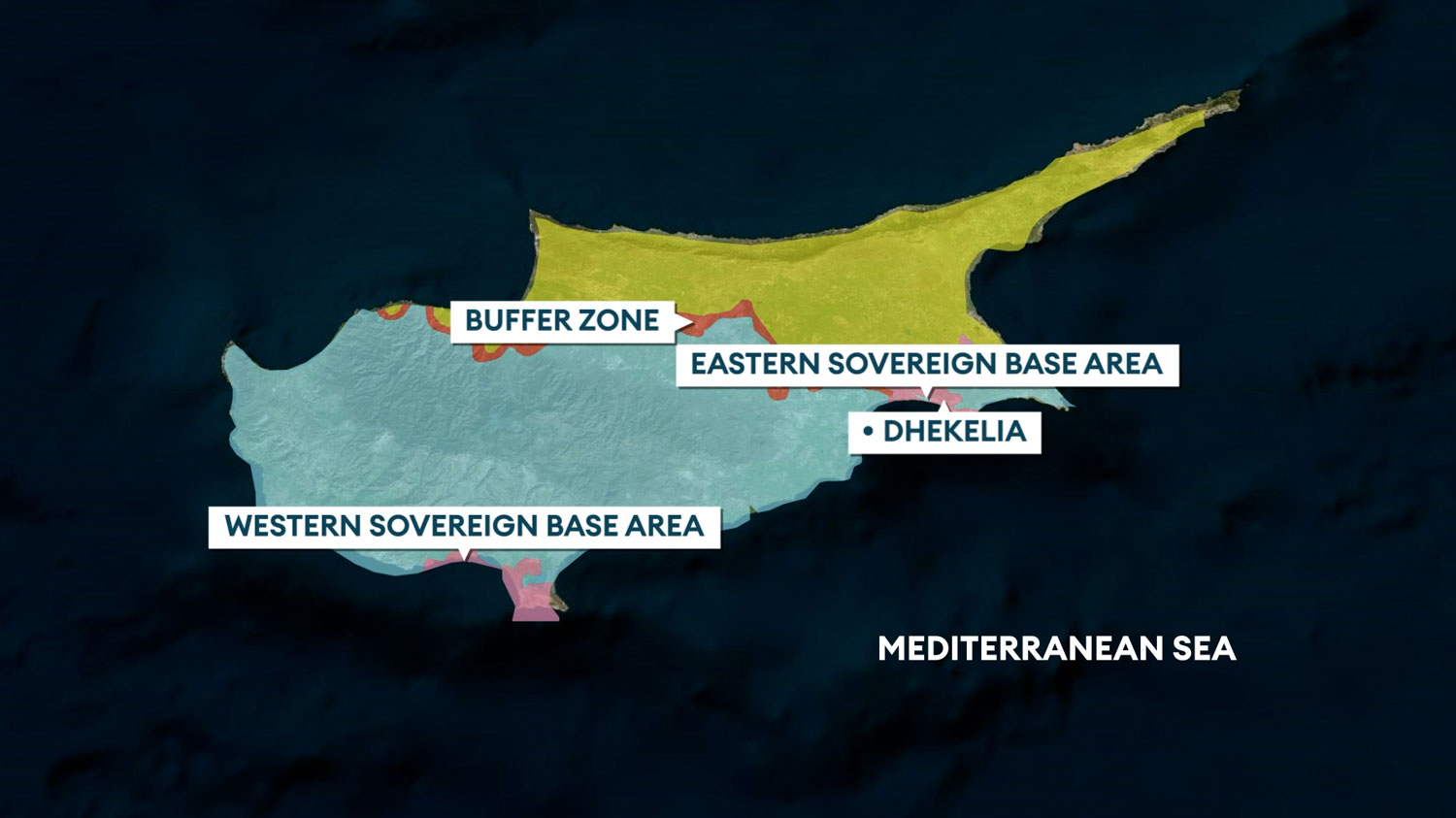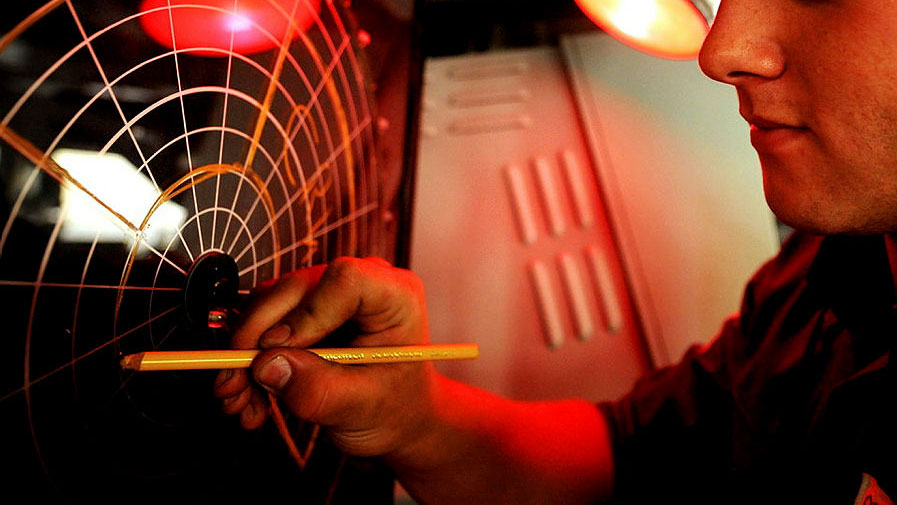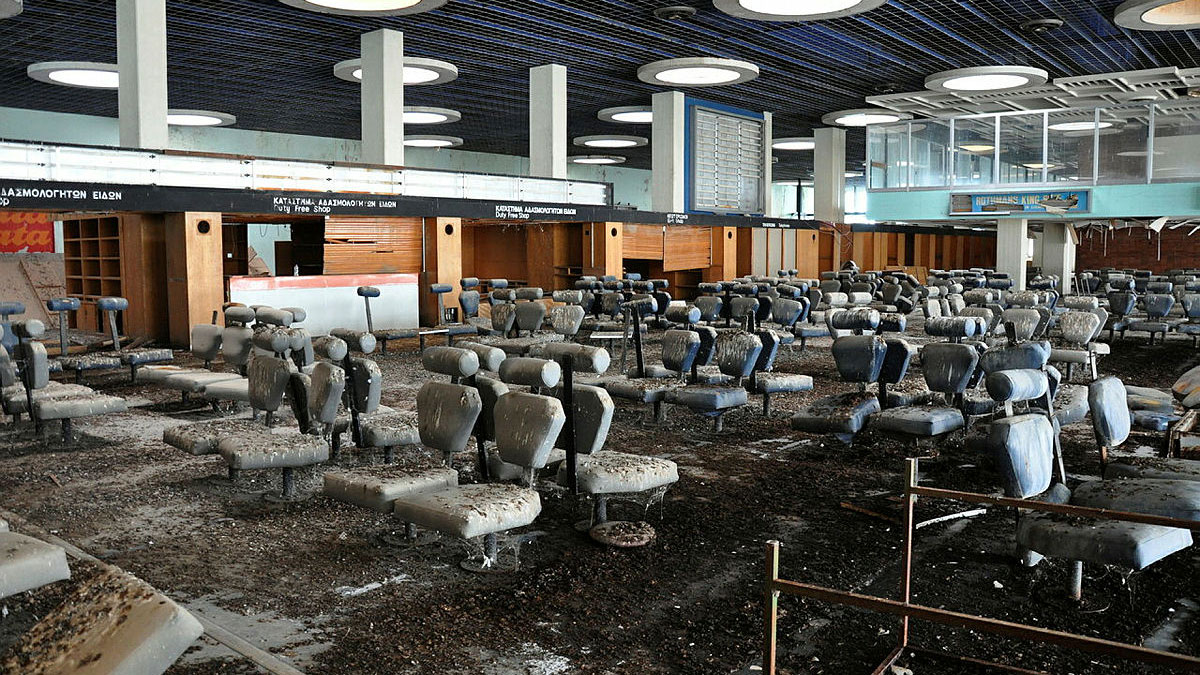
How Cyprus' Green Line earned its name more than 60 years ago

The United Nations Buffer Zone in Cyprus, also known as the Green Line, covers about 3% of the island, spans about 180km and varies in width from a few metres to several kilometres.
It was created by the UN in 1964 in response to heavy fighting between the communities on 21 December 1963 which led to the deaths of hundreds of Turkish and Greek Cypriots.
Regularly patrolled by British Army soldiers for 60 years, the Green Line's name has a unique origin all thanks to a major general and a chinagraph pencil belonging to his intelligence officer.
Why is there a UN Buffer Zone?
Since the fall of the Berlin Wall in 1989, Nicosia has been the world's only divided capital city.
For 60 years, central Nicosia has remained undisturbed and eerily empty since violence erupted on the streets of Nicosia in 1963 prompting the start of the ongoing UN peacekeeping mission in Cyprus.
In August 1960, Cyprus gained independence from the UK but, by 1963, the Greek Cypriot and Turkish Cypriot leaders were struggling to implement their new constitution and the relationship between the two sides started falling apart.
The country was torn apart by fighting so senior British officers knew they had to respond swiftly to bring peace back to Cyprus' civilian population.
In December 1963, a Political Liaison Committee was created to set up a cease-fire line between the Turkish and Greek communities.

The first meeting was held at the British High Commission on 29 December and attended by people such as the UK's High Commissioner, Greek and Turkish Ambassadors and representatives of the Greek and Turkish communities, Duncan Sandys, the Secretary of State for Commonwealth Relations and Major General Peter Young, General Officer Commanding Cyprus District.
The next day the committee agreed on the creation and patrolling of a neutral zone along the cease-fire line between the zones occupied by the two communities in Nicosia.
The creation of the Green Line
It was during a break on 30 December 1963 that Major Michael Perrett-Young, General Young's Intelligence Officer, took out chinagraphs – also known as grease or wax pencils – in several different colours.
Because the Greek flag is mainly blue and the Turkish flag is mainly red, green was chosen as a neutral colour for Gen Young to draw the line showing where the cease-fire line should be – plus green was traditionally used to mark man-made obstacles or no-go areas such as minefields.

In Brigadier Michael Harbottle's book The Impartial Soldier he wrote about the historic moment the Green Line was drawn.
He said: "Time and time again [Gen Young's] green chinagraph pencil retraced the line across the tale of his field map, only to be rubbed out and changed in direction to suit the requirements of one side or the other.
"At last the pencil wavered no more – and the Green Line was finally and irrevocably drawn.
"Little did anyone at that table that night, least of all General Young, think that the green ribbon of chinagraph would become a dividing line between Turk and Greek-Cypriot in Nicosia across which neither would step voluntarily for four years; an unremitting obstacle to progress towards normalization between the two communities."

And so, just two days before the New Year, the official agreement was signed which stated:
"At a time to be fixed by the joint force commander (General Young), all such Greek Cypriot and Turkish Cypriot posts in the vicinity of the green line from point X to point Y as he may designate, shall be evacuated; and he will occupy such evacuated posts as he may consider necessary.
"Before the posts on either side of the green line between points and B are evacuated, the force commander will set up such posts as he may consider necessary with the object of creating conditions of security in the blue-shaded area to enable the population to return to their homes.
It added: "As soon as the force commander begins to take over Greek and Turkish posts, he will be entitled, and so far as he considers it necessary, to send patrols at any time without further consultation, anywhere in Nicosia and the surrounding area."

Ten years later the country was torn apart again
Following the passage of the resolution, the United Nations Peacekeeping Force in Cyprus (UNFICYP) became active on 4 March 1964.
This led to the deployment of thousands of troops on the island to conduct patrols, negotiations, and evacuations.
Over the next 10 years, fighting eased on and off, but the military stance never wound down and on 15 July 1974, under the direction of Greek officers, the National Guard staged a coup d'état against the Cypriot government.
Just five days later, the Turkish Government responded by launching a military operation, sending paratroopers into the north.
Fighting broke out and the country was torn apart yet again.

At 6pm on 16 August 1974, a ceasefire was called and the UN recorded the location of the military lines and marked the ceasefire positions of both sides – setting out the buffer zone we know today.
Operation Tosca – the British contribution to a UN peacekeeping mission in Cyprus – is one of the longest-running missions within the United Nations.
Every day UN personnel patrol and monitor activity on both sides of the Green Line.
Since it was formed, efforts to encourage negotiations between the two sides have faltered many times but the UN has never stopped trying to encourage talks.
The future for this island is uncertain, but the UN personnel here today are committed to helping the two sides find a solution.
And their role is just as important today as it was 60 years ago.









